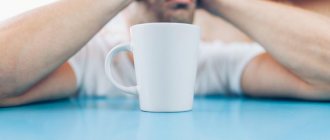Who is a social phobe
Like many terms, this word is formed from two parts: socius - general, society, phobos - fear. Social phobia or social phobia is an uncomfortable condition associated with the fear of performing social actions. Social phobes do not like to do something if they feel attention from strangers (and sometimes even close ones).
Every person has signs of social phobia. Some are afraid of public speaking, others will never return defective goods to the store, others panic when they simply see other people’s eyes on them. But it’s normal to be socially oriented. True, in moderation. If there are a lot of fears, and they literally lead to stress with corresponding symptoms (increased sweating, rapid heartbeat), we can talk about social phobia.
Social phobia is sometimes confused with sociopathy, a more severe condition that is classified as a personality disorder. It implies inappropriate behavior associated with ignoring basic standards of behavior in public places (don’t shout, look neat, be friendly). Sociopaths are indifferent to people and are often aggressive and rude, especially if someone tries to reproach them for something.
It turns out that a social phobe and a sociopath are two opposite personalities. If the first, upon entering the bus, modestly stands in a corner and faces the window, then the second will boldly sit in an empty seat, stretch out his legs into the aisle and be rude to the conductor who reproached him. Being a sociopath is even more difficult because they are unlikely to even think about taking such tests. Social phobes are aware of their problem and try to fight it.
Causes of phobia
Haptophobia can be caused by experiencing or participating in a traumatic event that causes touching. Moreover, a person may not remember the event that caused the phobia, especially if he was still young at that time.
Phobias can also run in families. A person may feel a fear of being touched if they observe a loved one showing such a fear of being touched.
Although haptophobia sometimes occurs on its own, it can also be associated with external conditions.
These include:
- Fear of bacteria (Mysophobia)
: a person may avoid touch due to fear of contamination or uncleanliness; - Fear of crowds (ochlophobia)
: A person with ochlophobia may feel anxious about being surrounded by strangers in a crowd; - Obsessive-compulsive disorder (OCD)
: A person with OCD may fear certain situations outside of their control, such as being touched by strangers; - Post-traumatic stress disorder (PTSD)
: Fear of being touched may come from a previous traumatic experience of touch, such as being present or coping with an assault or sexual assault.
↑
Should I get rid of a phobia?
Social phobes lead a secluded lifestyle, and this suits them. They get used to being alone because they are afraid to meet someone; choose freelance work so as not to have unnecessary contact with people; make purchases through online services. A minimal stay in society further aggravates the situation, because self-doubt only grows stronger over time, and fear intensifies. Therefore, it is necessary to fight. After all, you can’t sit in your apartment all your life: this can give rise to serious psychological disorders.
They knock each other out with each other, so the best way to get rid of social phobia is communication. If it is difficult to make contact with people on your own, you can contact a psychologist. But to do this, we suggest first determining whether you are a social phobe or not.
Test for fear and phobias online
Feeling fear is quite natural, it is a natural feeling, but if you understand that it is transforming into a phobia and is dangerous for your mental and physical health, then you should pay attention to the problem.
Before you start taking an online test for your phobias and fears, you need to relax and focus on the questions, set aside time for testing so that no one disturbs you, read the test questions carefully, and answer immediately without delay. It is very important to answer as honestly and frankly as possible.
The test results will help you decide what your inner fears are. In addition, thanks to a detailed interpretation of the "Are you afraid of fears and phobias?" test, you will be able to understand how you need to cope with these feelings. You can take the online test on the website for free. The test has a small number of questions, so it won't take you much time.
Source: woman-psy.com
Why take the test
This testing allows you to determine the level of social phobia on the Leibovich scale. This is the surname of the founder of the American Anxiety Disorders Clinic, and his classification is one of the most popular. He developed the test based on the behavior of his patients in certain situations that happen to every person. The testing turned out to be very simple, you can take it for free and online, without writing down answers on a piece of paper.
The purpose of testing is to determine the level of social phobia and identify the degree of anxiety when being in a public place. Before answering, you need to think carefully in order to give the most accurate assessment of your feelings in the specified situation. You take the test anonymously. There is no need to enter your data anywhere. You are doing this solely for yourself to understand whether some of your fears and concerns are signs of social anxiety. Or is it simply a reflection of your mood at a particular moment in time.
R.Kondash Methodology Personal anxiety scale. Diagnostic technique material
Personal Anxiety Scale R. Kondash
(A.M. Prikhozhan)
Purpose of the test: determining the level of personal anxiety
DESCRIPTION OF THE TEST This anxiety scale was developed by A.M. Prikhozhan in 1980-1983. according to the principle of O. Kondash’s “Scale of Social-Situational Fear and Anxiety”. The peculiarity of scales of this type is that in them anxiety is determined by a person’s assessment of the anxietyogenicity of certain situations in everyday life. The advantages of scales of this type are that, firstly, they make it possible to identify areas of reality that cause anxiety, and, secondly, they depend to a lesser extent on the ability of schoolchildren to recognize their experiences and feelings, i.e. on the development of introspection and the presence of a certain vocabulary of experiences.
The technique is a form-based one, which allows it to be carried out collectively. The form contains the necessary information about the subject, instructions and content of the technique.
The technique has been developed in two forms. Form A is intended for schoolchildren 10-12 years old, Form B is for students 13-16 years old. The instructions for both forms are the same.
Test instructions
(On the first page of the form). The following pages list situations and circumstances that you encounter in life. Some of them may be unpleasant for you, as they may cause anxiety, worry or fear.
Read each sentence carefully, imagine yourself in these circumstances and circle one of the numbers on the right - 0, 1, 2, 3 or 4 - depending on how unpleasant this situation is for you, how much it may cause you anxiety, fear or fear.
• If the situation does not seem unpleasant to you at all, put the number 0 in the “Answer” column. • If it worries you a little, worries you, put the number 1 in the “Answer” column. • If the anxiety and fear are strong enough and you would like not to get into such a situation, put the number 2 in the “Answer” column. • If the situation is very unpleasant and strong anxiety, anxiety, fear are associated with it, put the number 3 in the “Answer” column. • If there is very strong anxiety, very strong fear in the “Answer” column "put the number 4.
Turn the page.
(The instructions continue on the second page) Your task is to imagine each situation (yourself in this situation), determine how much it can cause you anxiety, worry, fear, apprehension, and circle one of the numbers that determines how unpleasant it is for you .
Possible answers:
No A little Quite a lot Very 0 1 2 3 4
Form A 1 Answer at the blackboard 2 Find yourself among unfamiliar children 3 Participate in competitions, competitions, olympiads 4 Hear spells 5 Talk with the school principal 6 Compare yourself with others 7 The teacher looks in a magazine about who to ask 8 You are criticized, reproached for something 9 They look at you when you do something (they watch you while working, solving a problem) 10 Having bad dreams 11 Writing a test, taking a test in some subject 12 After a test, a test - the teacher calls out the grades 13 What do you have something doesn’t work out 14 Looking at a person who looks like a magician, sorcerer 15 They don’t pay attention to you 16 Waiting for your parents from a parent-teacher meeting 17 You are threatened with failure, failure 18 Hearing laughter behind your back 19 Not understanding the teacher’s explanations 20 Thinking about what you you can achieve in the future 21 Hear predictions about space disasters 22 Perform in front of an audience 23 Hear that some person is “spellcasting” on others 24 They don’t want to play with you 25 Your abilities are being tested 26 They look at you like you’re small 27 You got a bad one in the exam 13th ticket 28 During class, the teacher unexpectedly asks you a question 29 Your work is being evaluated 30 You can’t cope with your homework 31 Falling asleep in a dark room 32 You don’t agree with your parents 33 You take on a new job 34 Talking with the school psychologist 35 Thinking about what you can “jinx” 36 They fell silent when you approached (approached) 37 Listen to scary stories 38 Argue with your friend (girlfriend) 39 Think about your appearance 40 Think about ghosts, other scary, “otherworldly” creatures
Form B
1 Answer at the blackboard 2 You need to ask a question or request to a stranger 3 Participate in competitions, competitions, olympiads 4 Hear spells 5 Talk with the school principal 6 Compare yourself with others 7 The teacher makes you a reprimand 8 You are criticized, reproached for something 9 They look at you when you do something (they watch you while working, solving a problem) 10 Seeing bad or “prophetic” dreams 11 Writing a test, taking a test in some subject 12 After the test, the teacher names the grades 13 Something is not working out for you 14 The thought that by a careless act you can incur the wrath of otherworldly forces 15 They don’t pay attention to you 16 You are waiting for your parents from a parent-teacher meeting 17 You are in danger of failure, failure 18 Hearing laughter behind your back 19 Not understanding explanations teachers 20 Thinking about your future 21 Hearing predictions about space disasters 22 Speaking in front of a large audience 23 Hearing that some person is “spellcasting” on others 24 Quarreling with parents 25 Participating in a psychological experiment 26 They look at you like you’re small 27 On an exam you got the 13th ticket 28 During class, the teacher unexpectedly asks you a question 29 You think about your attractiveness to girls (boys) 30 You can’t cope with your homework 31 Find yourself in the dark, see unclear silhouettes, hear strange rustling noises 32 Don’t agree with your parents 33 You take it for a new business 34 Talking with the school psychologist 35 Thinking that you can be “jinxed” 36 They fell silent when you approached (approached) 37 Communicate with a person who looks like a magician, a psychic 38 Listen to someone talk about their love affairs 39 Looking in the mirror 40 It seems that something incomprehensible, supernatural can prevent you from achieving what you want
Processing and interpretation of test results The key is common to both forms.
• School anxiety: 1, 5, 7, 11, 12, 16, 19, 28, 30, 34 • Self-reported anxiety: 3, 6, 8, 13, 17, 20, 25, 29, 33, 39 • Interpersonal anxiety: 2, 9, 15, 18, 22, 24, 26, 32, 36, 38 • Magic anxiety: 4, 10, 14, 21, 23, 27, 31, 35, 37, 40
PROCESSING AND INTERPRETATION OF RESULTS
The identification of subscales is largely arbitrary. For example, the communication situations proposed in it can be considered from the perspective of updating ideas about oneself, some school situations - as situations of communication with adults, etc. However, the presented option, as practice shows, is productive from the point of view of the task of overcoming anxiety: it allows you to localize the zone the greatest stress and build an individualized work program.
During processing, the answer to each of the scale points is assessed by the number of points corresponding to the number rounded when answering it. The total score is calculated for the scale as a whole and separately for each subscale.
The resulting score represents the primary, or “raw”, score.
The primary rating is converted to a scale rating. The standard ten is used as a scale rating. To do this, the test subject’s data is compared with the normative indicators of a group of students of the corresponding age and gender. The result obtained on the entire scale is interpreted as an indicator of the general level of anxiety, and for individual subscales - individual types of anxiety.
GENERAL ANXIETY
Walls Age and gender groups (results in points) 10-11 years old 12 years old 13-14 years old 15-16 years old girls. small dev. small dev. small dev. small 1 0-33 0-26 0-34 0-26 0-34 0-37 0-33 0-27 2 34-40 27-32 35-43 27-32 35-43 38-45 34-39 28-34 3 41-48 33-39 44-50 33-38 44-52 46-53 40-46 35-41 4 49-55 40-45 51-58 39-44 53-61 54-61 47-53 42-47 5 56-62 46-52 59-66 45-50 62-70 62-69 54-60 48-54 6 63-70 53-58 67-74 51-56 71-80 70-77 61-67 55-61 7 71-77 59-65 75-81 57-62 81-88 78-85 86-74 62-68 8 78-84 66-71 82-89 63-67 89-98 86-93 75-80 69-75 9 85-92 72-77 90-97 68-73 99-107 94-101 81-87 76-82 10 93 and more 78 and more 98 and more 74 and more 108 and more 102 and more 88 and more 83 and more
SCHOOL ANXIETY
Walls Age and gender groups (results in points) 10-11 years old 12 years old 13-14 years old 15-16 years old girls. small dev. small dev. small dev. small 1 0-8 0-7 0-2 0-7 0-8 0-7 0-7 0-6 2 9-11 8-10 3-5 8-9 9-10 8-9 8-9 7 3 12 -13 11-12 6-7 9-10 11-13 10-12 10-11 8 4 14-16 13-14 8-10 11-12 14-15 13-15 12-13 9 5 17-18 15- 16 11-12 13 16-18 16-17 14 10 6 19-20 17-18 13-15 14-15 19-20 18-20 15-16 11 7 21-22 19-20 16-17 16 21-22 21-22 17-18 12-13 8 23-25 21-22 18-20 17-18 23-25 23-25 19-20 14 9 26-27 23-24 21-22 19-20 26-27 26- 28 21-22 15 10 28 and more 25 and more 23 and more 21 and more 28 and more 29 and more 23 and more 16 and more
SELF-EVALUED ANXIETY
Walls Age and gender groups (results in points) 10-11 years old 12 years old 13-14 years old 15-16 years old girls. small dev. small dev. small dev. small 1 0-10 0-7 0-9 0-5 0-8 0-7 0-6 0-7 2 11 8-9 10-11 6-7 9-10 8-10 7-8 8-9 3 12 -13 10 12-13 8 11-13 11-13 9-11 10-12 4 14 11-12 14-16 9-10 14-16 14-16 12-13 13-15 5 15-16 13 17-18 11-12 17-18 17-19 14-16 16-17 6 17-18 14-15 19-20 10-11 19-21 20-22 17-18 18-20 7 19 16-17 21-22 13- 14 22-24 23-25 19-21 21-23 8 20-21 18 23-24 15 25-26 26-28 22-23 24-25 9 22-23 19-20 25-27 16-17 27-29 29-31 24-26 26-28 10 24 and more 21 and more 28 and more 18 and more 30 and more 32 and more 27 and more 29 and more
INTERPERSONAL ANXIETY
Walls Age and gender groups (results in points) 10-11 years old 12 years old 13-14 years old 15-16 years old girls. small dev. small dev. small dev. small 1 0-8 0-7 0-8 0-8 0-6 0-8 0-6 0-7 2 9 8 9-10 9 7-9 9-11 7-8 8-9 3 10 9 11-12 10 10-12 12-14 9-11 10-12 4 11 10 13-14 11-12 13-15 15-17 12-13 13-15 5 12-13 11-12 15 13 16-17 18-20 14 -15 16-17 6 14 13 16-17 14-15 18-20 21-23 16-18 18-20 7 15 14 18-19 16 21-23 24-26 19-20 21-23 8 16-17 15 20-21 17-18 24-26 27-29 21-23 24-26 9 18 16 22-23 19 27-29 30-32 24-25 27-28 10 19 and more 17 and more 24 and more 20 and more 30 or more 33 or more 26 or more 29 or more
MAGICAL ANXIETY
Walls Age and gender groups (results in points) 10-11 years old 12 years old 13-14 years old 15-16 years old girls. small dev. small dev. small dev. small 1 0-7 0-6 0-7 0-4 0-5 0-6 0-6 0-5 2 8 7 8-9 5-6 6-7 7-8 7-9 6-7 3 9-10 8-9 10-11 8-10 9-10 10-11 8-9 4 4 11-12 10 12-13 8-9 11-13 11-12 12-14 10 5 13-14 11-12 14-15 10 14-15 13-14 15-16 11-12 6 15-16 13 16-17 11-12 16-18 15-16 17-19 13 7 17-18 14 18-20 13 19-21 17-18 20 -22 14-15 8 19-20 15-16 21-22 14-15 22-23 19-20 23-24 16-17 9 21-22 17 23-24 16 24-26 21-23 25-27 18 10 23 and more 18 and more 25 and more 17 and more 27 and more 24 and more 28 and more 19 and more
Instructions
The questions are designed taking into account the most common situations that happen to all people. You must try each circumstance on yourself and assess your level of anxiety at the same time.
- 0 – no anxiety at all, I do it easily.
- 1 – there is slight anxiety, but I do it anyway.
- 2 – moderate anxiety, which may cause me to refuse to do this.
- 3 – severe anxiety, bordering on panic.
The second scale is avoidance. You must evaluate how often you try to avoid such situations.
- 0 – I never avoid it, because it doesn’t bother me.
- 1 – sometimes I try to avoid.
- 2 – I avoid it very often.
- 3 – I do everything to prevent this from happening.
The combined results will help determine two parameters:
- Presence of social phobia.
- The degree of its expression.
An interpretation of the test results is provided after completion. For severe social phobia and its more severe forms (severe, extremely severe), it is recommended to consult a psychologist.
Treatment of haptophobia and overcoming emotional stress
One of the biggest challenges to overcoming haptophobia is avoiding the situation that causes the fear.
Treatment aims to help the person cope with the anxiety associated with their fear and gradually overcome this obsessive fear.
Effective treatment for haptophobia includes:
↑
Psychotherapy or talk therapies
There are many types of therapy that can help a person cope with or overcome haptophobia.
These include:
- Cognitive behavioral therapy (CBT)
can teach a patient new behaviors and thought processes to help cope with the irritation they experience when touched. - Exposure therapy
is where a patient is gradually exposed to their fears in a safe, supervised environment over several weeks or months. Such therapy begins with the activation of imaginary touch and with further, now physical, touch, as if placing the patient in a crowded space. - Virtual reality exposure therapy
allows you to safely control exposure to phobic objects or situations without the risk of being near the object or situation.
↑
Medications
Medicines such as beta blockers or antidepressants may also help relieve symptoms of anxiety and panic in haptophobia. These drugs are often used in combination with psychotherapy.
↑
Types of social phobias
There are several types of social phobia, they differ in the subject of fear. For example, a person is afraid of blushing in public or afraid of telephone conversations, or, conversely, afraid of personal communication.
The following objects of fear are encountered:
- speaking in public;
- answer at the board;
- speaking in front of classmates and classmates;
- interview;
- business meeting;
- conversation with superiors;
- communication with strangers (for example, you need to ask for directions);
- communication by phone, via Skype, on a social network;
- traveling on public transport (any activity, for example, reading, eating food);
- date;
- events where large crowds of people are expected;
- shopping;
- using a public toilet;
- competitions.
These are just the most popular stressful situations; in practice there are many more.










